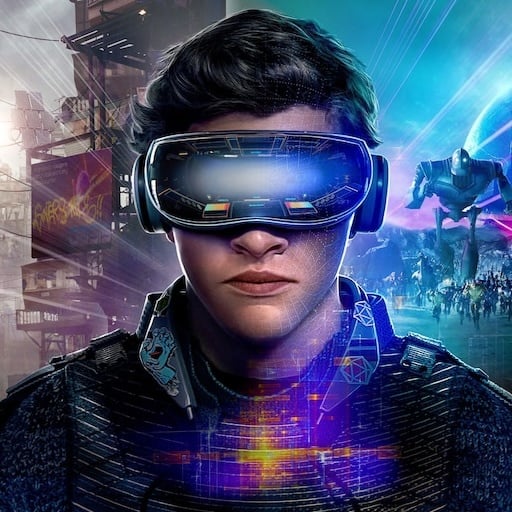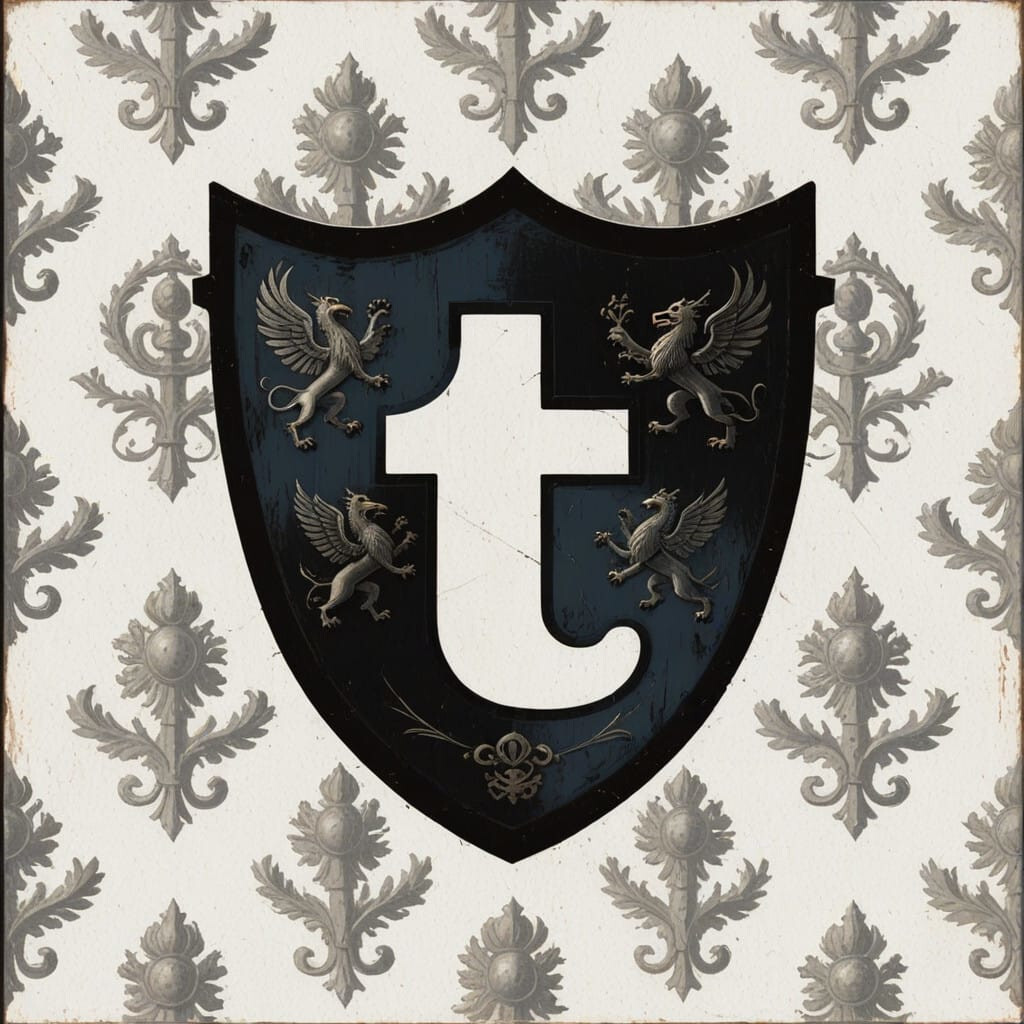I dunno, silverfish are smaller than flies, but they still give me that revulsion response.
- 1 Post
- 106 Comments

 91·3 days ago
91·3 days agoHubris is a kind of boastful pride–like a sense of invulnerability. It also implies a kind of dramatic irony, that this sense of invulnerability will eventually prove false. (The term comes from ancient Greek theater, where it’s often the Heroic Flaw that will eventually be the undoing of the tragic hero.)
Chutzpah is more…audacity, nerve, gall. A person with chutzpah doesn’t believe they can’t be harmed; they’re just willing to bald-face it out in the hopes you won’t actually call them on it. In English it can have a positive connotation, the way “cojones” tends to, but it can also have a negative connotation, like “cheek” or “gall.” It comes from Yiddish, where apparently it’s more uniformly negative. (Leave it to us Americans to interpret a condemnation of shameless effrontery as somehow laudatory.)
I guess I would say the key difference is that someone with hubris thinks they are invulnerable, whereas a person with chutzpah is aware they are vulnerable and absolutely refusing to act like it.
They’re definitely kind of related, but they just have really different feels to them
“In the game of chess, you can never let your adversary see your pieces.” --Zapp Brannigan

 1·7 days ago
1·7 days agoFunny thing about that–the authors had no significant ties to West Virginia and were instead inspired by a road trip through Maryland. https://www.baltimoreexaminer.com/john-denver-country-roads/

 1·8 days ago
1·8 days agoETA Prime tried running the 395 at lower TDPs, and the result was that it lost most of its performance advantage: https://m.youtube.com/watch?v=r8JpqfqBpvQ
Which really shouldn’t be too surprising, I guess–all those CUs need power.
I do think power requirements for this level of performance will keep dropping over the next several years, but it doesn’t seem like it’s quite within the necessary power envelope at this point.

 9·8 days ago
9·8 days agoThat’s not how the article describes it, at least:
Essentially it creates a vapour chamber-like effect by using heat emitted from the CPU to evaporate a refrigerant, which then moves up a vapour tube into a fan-cooled condenser, where it cools off, condenses back to a liquid state, and makes its way back to the CPU to be heated again—no pump required.
Which sounds exactly like a heat pipe.
Edit: I guess the difference is that heat pipes use wicks and capillary action to return the liquid phase, where the thermosiphon instead uses gravity, which makes it a little easier to produce and higher capacity, but vulnerable to changes in orientation.

 2·8 days ago
2·8 days agoI thought this for a long time. The AI 395, with a 40-CU GPU, seemed easily powerful enough. Unfortunately, that’s also the issue–it runs at 55W by default. That’s too much heat to strap to your face, and it’ll drain a 100Wh battery in less than two hours anyway. (That’s the maximum size of battery you can take on a plane in the US, so exceeding that would be a very bold choice.)
The Steam Deck gets away with less power (often 15W) because it’s running games at lower framerates and a lower resolution, but that’s not a good option for VR.
I’m definitely curious to see what they actually do with the Snapdragon, though. Maybe some kind of recompilation tech? Or maybe just partnerships with devs who have already released on Quest to start a new store for standalone stuff, along with the streaming tech they’ve already got. I really want it to be good.

 2·9 days ago
2·9 days agoYou definitely can start this way. When I started, I got some help from a physical therapist–I had really messed up my back, and in addition to helping with the acute issue, they also selected a set of exercises and numbers of reps for me that I could do at home, and that was a great starting point for my exercise routine. It was pretty short and focused, so it was easy to find time to do it every day, and the practice of keeping at it was really helpful. My health insurance covered most of the cost of the physical therapist; I had to pay a copay, but even then it was just a couple times a week for maybe two months, so not exorbitant. Insurance is generally willing to help with this stuff for a little while because they know that if your health improves, it’s likely to reduce their future costs. So it’s worth looking in to whether yours would help with something like that just to get yourself going. I don’t think you need to have an acute problem to take advantage of that; I think having a specific goal for improvement is adequate. (They want measurable goals, like “I’d like to be able to jog five minutes without getting winded,” or that sort of thing. I believe mine was “I’d like to be able to spend a day out walking around a garden with my family without being laid up the next day by my back.” Which reflects where I was at the time. But, y’know, anything that reflects where you currently are, and something that you might be able to achieve in a six-to-eight-week timeframe, is probably a good goal.)
Doing that regularly also got me listening to my body, and that got me to gradually expand my routine–I eventually understood that some of my back issues were propagating up from hip issues, so now I work on those, and some of those are coming from limited ankle mobility, so I’m also working on that, and working on that has got me doing “goblin squats” that has gotten me to stop thinking of dumbbells as something to avoid. I’m also getting closer to being able to do pull-ups; I got a pull-up bar because just hanging from a bar sometimes can really help with a bad back, but at some point I started thinking about how much more I enjoyed moving when I was a kid and took gymnastics classes, and back then I actually had the strength to do things like pull-ups. So now I can do some resistance-band assisted pull-ups, and hopefully in a year or two I’ll be able to do the proper thing.
Picturing enjoying movement is something that really motivates me, actually. Like, I used to enjoy biking and ultimate frisbee. I don’t, now, but I think I might enjoy them again at some point. I think I might also enjoy parkour, if I can get into that kind of shape, but I recognize that may not be an achievable goal at this point. I had a kind of enthusiasm for brief bursts of very intense movement, like sprinting up a flight of stairs two at a time, or climbing up onto a loading dock in a single giant step.
At this point I do a basic set of dumbbell weight exercises, squats and lunges, push ups, a back stretching and exercises routine, assisted pull-ups, and a walking/running aerobics routine. It’s not a ton, but I’m really in vastly better shape than I was when I started a few years ago. I do have a handful of equipment–the dumbbells, a floor mat, a couple of foam rollers, an exercise ball (for trunk lifts, which are good for a weak lower back), a doorway pull-up bar, some resistance bands that I basically just use with the pull-up bar, and the biggest thing is an elliptical machine for when the weather is too bad to do the aerobics outside. There are ways to do it without a machine, like jogging in place or doing rapid shallow squats, but the machine is kind of nice–it’s hard to explain, but it really helps to have the exercise take place in its own little isolated space, or even just in its own mental space. I actually also have a little lighted sign that I made (it’s a recreation of the neon sign for an exterminator’s in my home town that always tickled my fancy back then–it’s got a giant neon rat in the middle) and I like to turn that on in my room specifically while I do my exercises there (everything other than the aerobics and pull ups), just because it kind of marks out the distinction of exercise time. It helps make it a ritual, and that helps make it a habit. As I say, hard to explain, but it feels like it matters.
I will say, this routine has also helped me lose some weight. I’m down about 45 lbs (~22kg) from this time last year. That’s mainly down to diet changes, but I did ramp up my exercising while doing this to be sure that I was losing fat rather than just losing muscle. I’m still a lot heavier than I’d like, but I’m definitely proud of how far I’ve come. I’m improving in other measures, too, like my resting heart rate is down from around 100 to around 80, which, again, is not where I’d like to be, but represents movement in the right direction.
So, I do think the physical therapist helped a lot with getting me started, but most of my work I’ve done at home, and without too much in the way of equipment.
Would I have done better, faster by going to a gym? I dunno. I definitely know that friction is a big factor. If it’s hard to actually go do the thing, then it’s easy to make excuses not to go do the thing; needing to actually travel to a gym definitely counts for that. There’s kind of a balancing act in making my routine easy enough and pleasant enough that I’ll actually do it, but also challenging enough that I’m still gradually improving. Sometimes I need to let myself slack off at something a little as an incentive do just do the thing. And sometimes once I’m actually doing the thing I don’t need the slack after all.
Bit of a rant, I guess. Sorry, it feels like so much of this stuff is, like, techniques for outwitting part of my own brain, and it feels like those are things other people might be able to use, but I’m not sure how transferable they really are. Hope it helps.
Good luck with your journey! I know I’ll need luck on mine.
I never actually played Fable 2 (it never came to PC) but 1 was decent for its time, and yeah, 3 kind of fell apart. (You get to what seems like the halfway point, then the rest of the game plays out in a few minutes, entirely through menus, and is super boring.)
But mostly I’m finding it hard to imagine how a new take on this would stand out in today’s market. It’s, let’s see, a third-person action game with RPG elements tacked on. The setting is…generic western fairytale fantasy. I’m not saying the game couldn’t be good, but what would be distinctive about it? Having people call you “chicken chaser”? What is the contribution of the “Fable” pedigree here, apart from Molyneux baggage?

 6·9 days ago
6·9 days agoPure functional programming is often like this.
I was always so frustrated in college when I’d run a load at the laundromat, and then discover I’d missed a dryer sheet someone had left in the dryer. I’d be itchy all week.

 2·13 days ago
2·13 days agoFair enough. I know that style can be polarizing, it’s why I put that caveat in there.

 3·14 days ago
3·14 days agoI really enjoyed Ys VIII (“Lacromosa of Dana”), if you can tolerate the kind of anime-ish story. It’s an action RPG. It’s not especially immersive (very game-y), but it’s got pretty good level design, and the combat is pretty fun, if not particularly challenging (a little button-mashy).

 2·15 days ago
2·15 days agoThey can’t really keep them in stock, though. I was checking on them shortly before the sale started and the refurbished 64GB LCD models were all out. Now all the refurbished models are sold out.
It’s just as well, though. Between the Switch 2 and the Deckard, I’ve got some other stuff I might want to waste money on this year.

 21·18 days ago
21·18 days agoThe one I thought was a good compromise was 14 years, with the option to file again for a single renewal for a second 14 years. That was the basic system in the US for quite a while, and it has the benefit of being a good fit for the human life span–it means that the stuff that was popular with our parents when we were kids, i.e. the cultural milieu in which we were raised, would be public domain by the time we were adults, and we’d be free to remix it and revisit it. It also covers the vast majority of the sales lifetime of a work, and makes preservation and archiving more generally feasible.
5 years may be an overcorrection, but I think very limited terms like that are closer to the right solution than our current system is.

 5·24 days ago
5·24 days agoSean Duffy is the transportation secretary.

 4·26 days ago
4·26 days agoI should preface this by saying I don’t actually have a steam deck yet, so I haven’t tested these on there. So I’m only commenting on the games themselves. These are listed as deck “verified” in the steam store, though.
One I haven’t seen mentioned yet is Yoku’s Island Express. Breezy summer vibes, not much difficulty. It’s kind of a pinball metroidvania.
Tinykin is another game with a very cozy/low stakes feel. It’s an exploration/collectathon platformer with cute environments made up of household objects.
Littlewood is a life sim sort of game, kind of like Stardew Valley, but it’s extremely chill. There’s no time limit or anything like that.
And others have mentioned these, but Toem, Alba, and Donut County are all very good and gentle games too.
Oh, and Tchia. That one has some dark moments at times, mostly in cutscenes, but when you’re actually playing it’s mostly gentle and island-y.
Maybe also Wuppo? It’s a strange one. The story and humor and animation are pretty great in that one, but there are some boss fights that can get a little frustrating. It’s mostly a fairly chill platformer, but then it’s got kind of bullet-hell-adjacent bosses. I still really like the game, but it’s not quite as purely relaxing as some of the others here.
Pikuniku is kind of in the same position as Wuppo, but I liked it a bit less. The humor feels a little more forced or stilted, and the frustrating bits are because the controls are kinda floaty. My niece really liked it when she was 8, though, so it had that going for it.
Hope this helps! I’ve been looking for this kind of game a lot the past few years
It’s a British TV anthology series similar to The Twilight Zone, but most of the episodes are about technologic dystopias






I think they move too smoothly. I think it’s maybe a combination of the “ew, tiny things are parasites” and the “ew, smooth-moving things are snakes” responses, even though neither of those is appropriate for the silverfish itself. I think that’s part of what happens with the house millipedes, too.